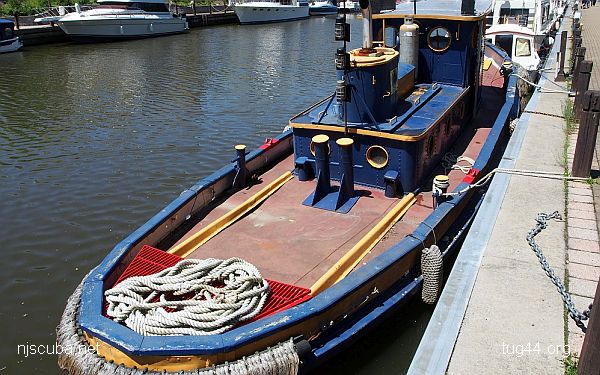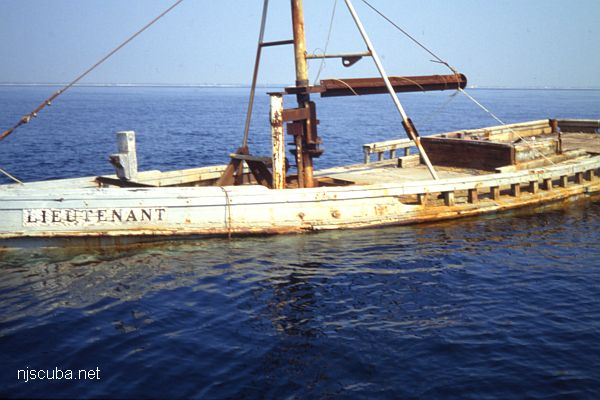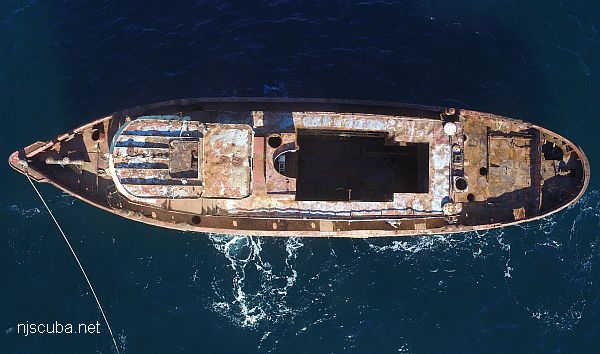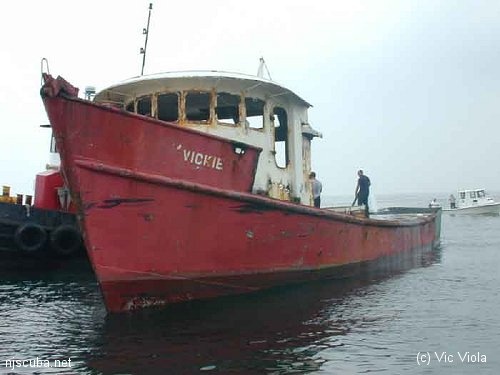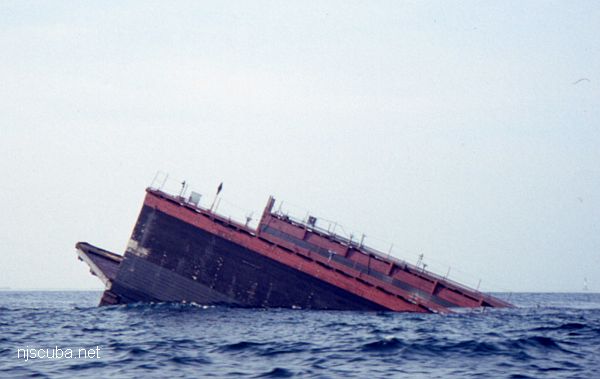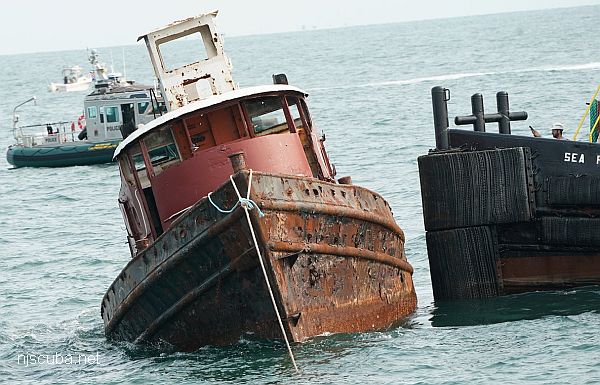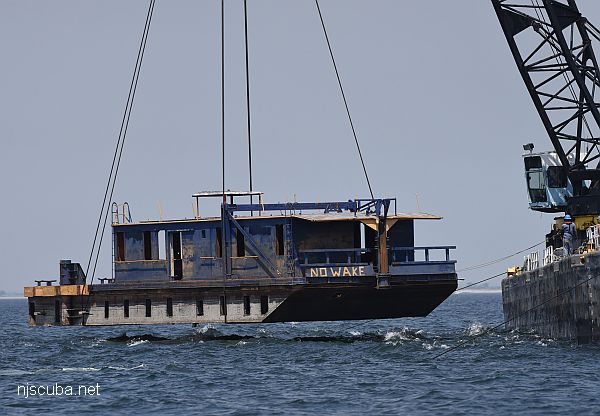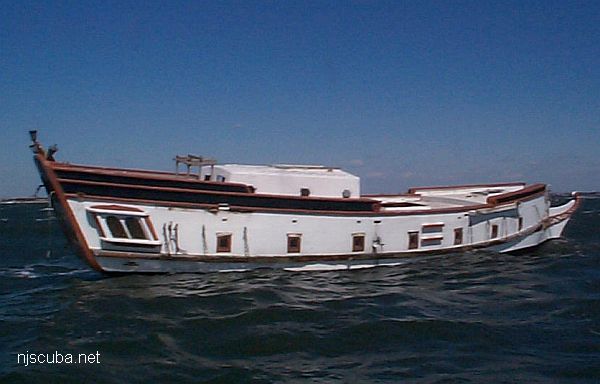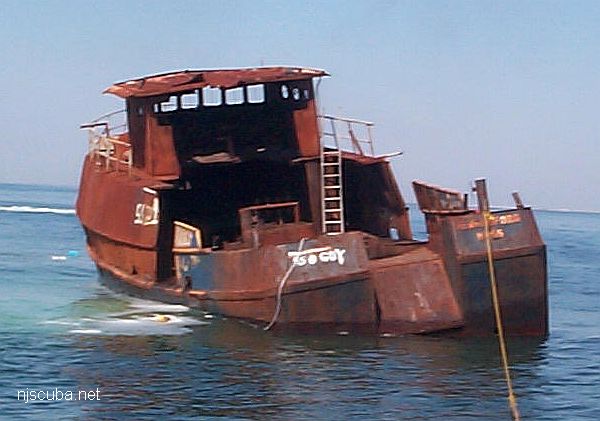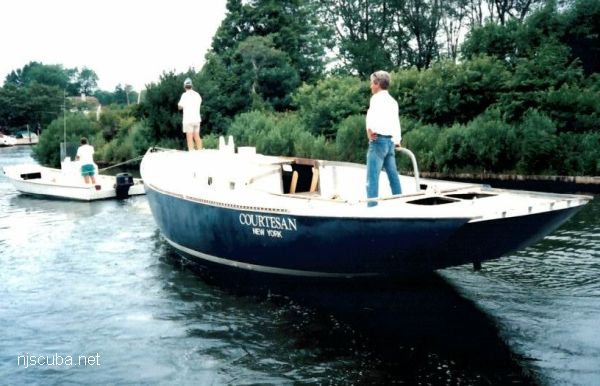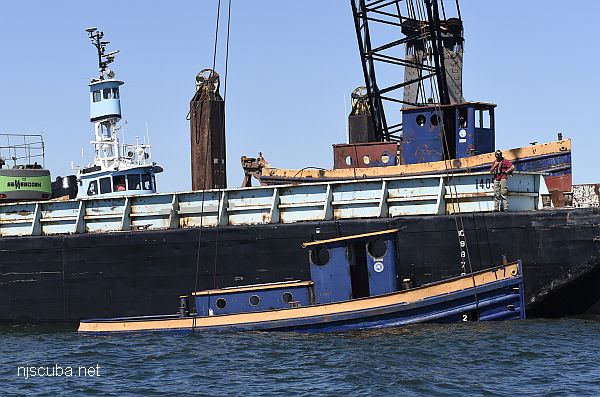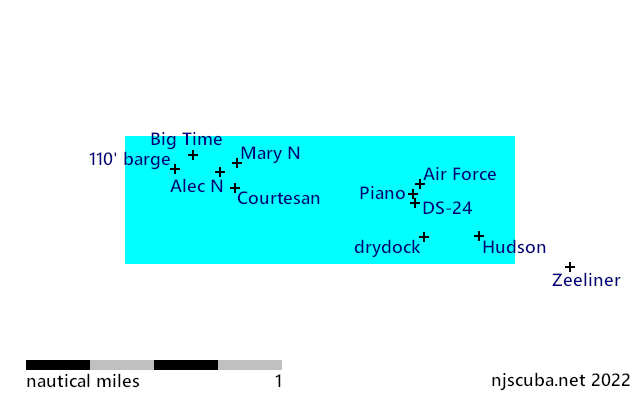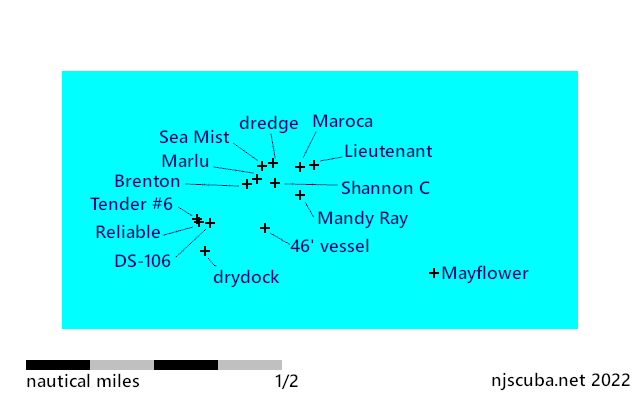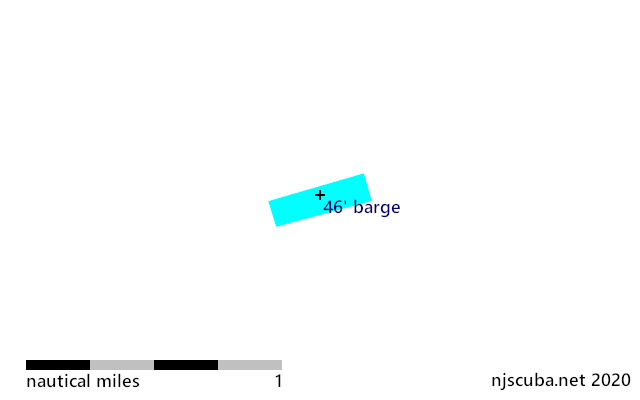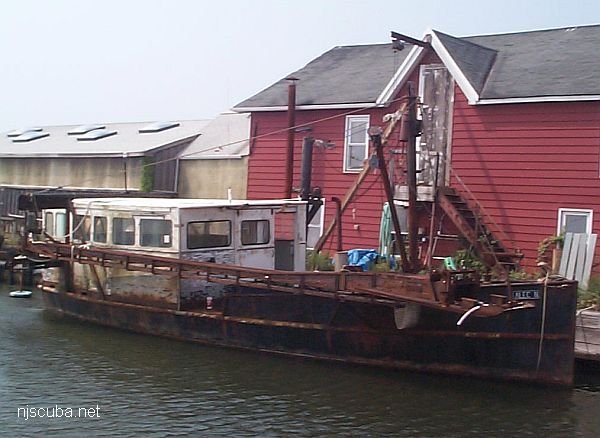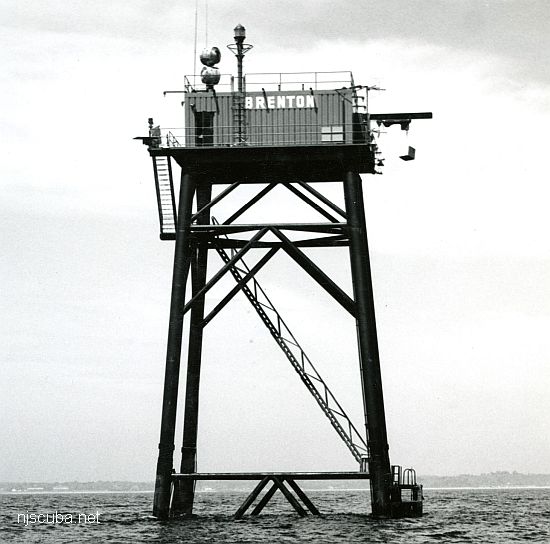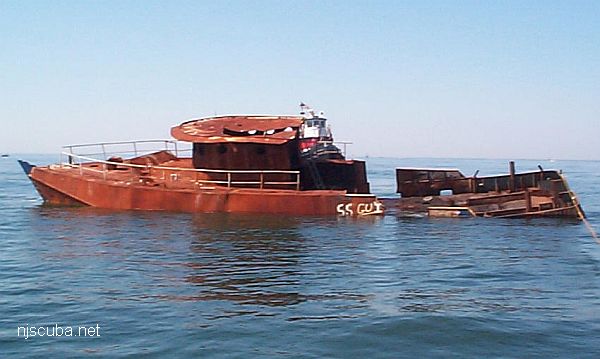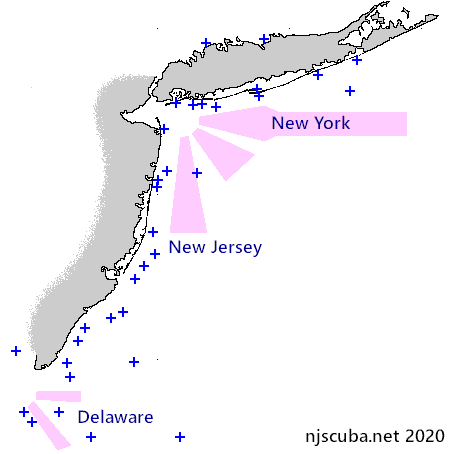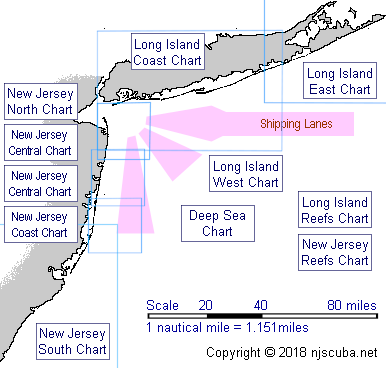New York Artificial Reefs

Four of the reef sites are too small to draw at this scale, so they are represented by blue crosses. If you cut the arms off the crosses, that's about how big the reefs would be! Inlets are labeled in black, except for Rockaway, which is actually two inlets and a reef. Moriches is also much smaller than shown here; the proposed expansion is plotted, the current reef would be a dot.
New York Artificial Reef Charts
- Atlantic Beach Reef ...
- Fire Island Reef ...
- Hempstead Reef ...
- Kismet Reef ...
- Matinecock Reef ...
- McAllister Reef ...
- Moriches Reef ...
- Rockaway Reef ...
- Shinnecock Reef ...
- Smithtown Reef ...
- Twelve-Mile Reef ...
- Yellowbar Reef ...
New York Artificial Reef Sites
- Alec N
- Ana Palmira
- Army Tanks
- Bad Bob's Big Boat
- barges - Atlantic Beach
- barges - Fire Island
- barges - Hempstead
- barges - Kismet
- barges - Matinecock
- barges - McAllister
- barges - Moriches
- barges - Rockaway
- barges - Shinnecock
- barges - Smithtown
- barges - Twelve-Mile
- barges - Yellowbar
- Beyond
- Big Time (Peter's Reef)
- Brenton Lighthouse
- Cape Fear
- Captain Sam
- Charade
- Chickadee
- Connie F
- Courtesan
- Dauntless
- New York Artificial Reef Program
- New York Artificial Reef Guide 2019
- NYS DEC Press Releases
- NYS DEC Artificial Reefs Interactive Map
- NYS DEC YouTube Channel

